Cleoma: description, planting and care

With the arrival of spring, the life of each person becomes much more varied and more fun. After hibernation, animals and plants begin to wake up. The first shoots of herbs and flowers appear on the flower beds. It was during this period that gardeners begin active steps to decorate their personal plots. Thanks to the painstaking work of breeders and botanists, flower growers can cultivate many plants that differ in appearance, flowering period and method of care. Experienced gardeners recommend choosing unpretentious varieties, the cultivation of which will not cause difficulties even for beginners. One of these colors is cleoma.






Peculiarities
Cleoma is a herbaceous plant that belongs to the cleomaceous family and is a subspecies of cabbage. Due to the unusual structure of the buds, this flower is often called "champagne spray" or "spider flower". A detailed description of this plant can be found in the specialized literature on botany.
Depending on the type of cleoma, it can be either an annual flower or a perennial one. The maximum height of an adult plant can reach 150 cm. The flower has a strong and developed root system, as well as powerful shoots and stems. The surface of the branched shoots is covered with unusual villi.
The leaf plates are colored in a delicate malachite shade and are alternately arranged. Depending on the variety, the leaves can be either complex or simple, solid or carved, long or rounded. The number of leaves on the shoot can be up to 7 pieces. The leaf plates at the top are small and solid.
Biologists recommend paying attention to varieties in which the underside of the leaf is covered with small thorns.

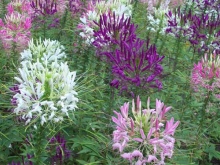
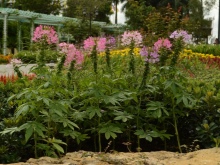
The plant throws out very tall peduncles, at the ends of which inflorescences in the form of a brush are formed from small flowers. In the middle of the buds, you can see long stamens that resemble insect tentacles. The color range of colors is very diverse and consists of the following shades:
- White;
- purple;
- yellow;
- Orange;
- lilac.
The flowering period begins in early summer and lasts until autumn. A distinctive feature of the plant is the presence of a specific aroma, which in high concentration can cause unpleasant sensations. Due to this smell, a low concentration of parasites and dangerous insects is observed in the growing area of the flower.
After the flowers wither, pod seed boxes begin to form in their place, the size of which does not exceed 0.5 cm.


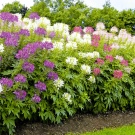



Types and varieties
More than 100 types of cleoma can be found in their natural habitat, but only some varieties of annuals and perennials, which are widely used in landscape design, grow in artificial conditions. Experts recommend paying attention to the following varieties:
- thorny (Spinosa);
- Hassler (Hassleriana).


The most popular varieties of prickly cleoma and their colors:
- "Cherry Queen" - purple, lilac;
- Helen Campbell - snow-white;
- Rosenkonigin - peach;
- "Pink Queen" - pink;
- "Rose queen" - light pink;
- "Violet Queen" - lilac, dark blue;
- "Matilda" - multi-colored;
- Golden sparkler - lemon, gold;
- "Giant pink kyusen" - dark pink;
- "Colored fountain" - multi-colored;
- "Sparkler Lavender" - pale purple.


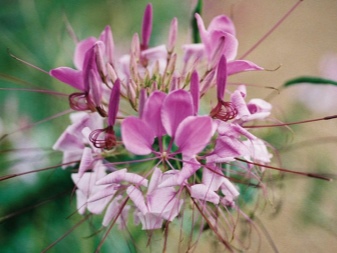
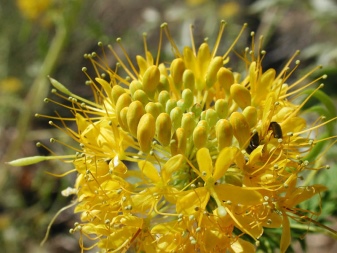
Hassler's cleoma varieties and their colors:
- "Splashes of champagne" - pearl, pale lilac;
- Kelly Rose - pink, lilac.
The Queen series deserves special attention, which includes such varieties as Cherry Queen, Pink Queen, White Queen and Violet Queen.

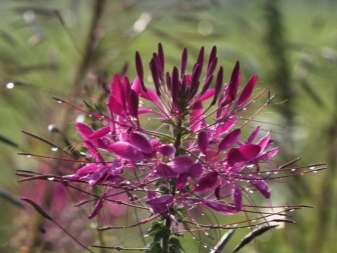
Growing seedlings
Cleoma is one of those ornamental plants that can only be propagated with seeds. Harvested or purchased seed material can be sown directly into the ground or used to obtain seedlings.
Sowing
In order to grow healthy and strong seedlings, it is necessary to begin agrotechnical work at the end of winter. Seeds can be planted in special planting containers filled with nutrient mixture, or in peat containers. You can use ready-made soil for planting or prepare a soil mixture at home. For self-preparation of the substrate, it is necessary to mix humus, turf soil and river sand in equal proportions. Before sowing seeds, they must be soaked in a growth accelerator, which will not only increase the percentage of germination, but also protect the plants from various diseases.
The process of planting seeds consists in their even distribution over the soil surface, followed by pouring a nutrient mixture with a height of 15 mm. Ready containers should be abundantly moistened with a spray bottle and the entire surface should be covered with glass or cling film.
In order to prevent rotting of the planting material, it is necessary to ventilate the containers several times a week and, if necessary, moisten the soil. Under favorable conditions, the first shoots may appear as early as 2 weeks after sowing.


Seedling content
After the first shoots appear, it is imperative to remove the protective cover and place the containers in a warm and well-lit room. If sunlight is still not enough for the full development of sprouts, then experts recommend installing artificial lighting lamps.
For so that the plants can fully develop, it is imperative to water them regularly, without waiting for the topsoil to dry out... After the plants grow up a little, they must be watered with a weak solution of potassium permanganate, which will help disinfect the soil and protect young plants from viral and fungal diseases. During this period, you can remove artificial lighting and increase the frequency of watering.

In the phase of appearance of 2-3 true leaves, you can begin the process of picking plants into small flower containers filled with nutrient soil. It is necessary to transplant sprouts as carefully as possible, trying not to damage the root system. 2 weeks after the picking, the flowers must be fertilized with special mineral fertilizers.
Containers with flowers should be placed as comfortably as possible on well-lit window sills and regularly rotated relative to the sun. This activity will avoid twisting and stretching the seedlings.

How to plant in open ground?
In order for the grown seedlings to begin and develop well, special attention must be paid to observing the rules for planting it in the garden, choosing a place and the intricacies of caring for it.
Optimal timing
Experienced gardeners recommend not to rush to plant seedlings in open ground and wait until the threat of night frosts has completely passed. The most favorable time for planting is late spring. Two weeks before the start of planting, experts recommend that the plants must be hardened. In order for the seedlings to easily endure the nighttime drop in temperature, they must be taken out into the open air every day for 7 days and left there for 40-50 minutes.

If it is not possible to grow seedlings, then you can sow seeds directly into the ground. This event can be held both in spring and before winter.
Spring sowing of seeds should be carried out during the period when the soil warms up to a depth of 6 cm. The optimal time for these works is the end of April or the beginning of May. Autumn planting should be carried out no earlier than mid-November. Planting seeds before winter is less troublesome because there is no need for additional stratification.
Sowing seeds in open ground must be carried out in grooves with a depth of 15 mm. The optimal row spacing is 35 cm. The care procedure consists of a set of classic activities similar to growing seedlings. Seeds planted before winter need additional shelter. As a covering material, you can use dry foliage, spruce branches, sawdust and crushed tree bark. Such a shelter will create the most favorable microclimate and prevent the freezing of seed.
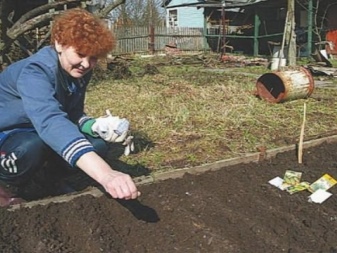

Seat selection
Cleoma is a sun-loving plant that should be planted in well-lit areas. The flower does not like windy places, so the flower bed must be protected from cold air currents. Cleoma prefers to grow in nutrient-rich soils with low or neutral acidity.
If the soil in the selected area is poor, then in early spring it is necessary to enrich it with mineral and organic fertilizers and carry out a complete digging.

Fundamental rules
Compliance with the planting rules is the key to getting beautiful green compositions. For to get the maximum number of accepted plants, experienced gardeners recommend following the following planting rules.
- Treatment of plants with special preparations to accelerate the growth of the root system.
- Placing seedlings in planting holes. If the seedlings were planted in peat containers, then the flowers must be rooted with them.
- Filling cavities with nutrient mixture while compacting the soil.
To prevent the formation of dense thickets, which can provoke the appearance of dangerous insects and diseases, it is necessary to plant cleomes at a distance of 50 cm from each other.


How to take care of it properly?
Cleoma belongs to unpretentious plants that need a minimum amount of care and attention. Despite this feature, experienced gardeners recommend adhering to certain rules.
Watering
This flower does not need a lot of moisture, the excess of which can provoke rotting of the root system. Only young seedlings need frequent watering, but the soil near adult plants should be moistened only in case of prolonged drought. To prevent the soil from drying out, experts recommend mulching the entire root zone.
In order to prevent an earthen crust from forming near the flowers, experienced florists recommend loosening the soil after each watering. This procedure will provide unhindered access of oxygen to the roots, which will have a beneficial effect on the general condition of the flowers.


Top dressing
To obtain a large amount of green mass and colorful inflorescences, the plant needs nutrients. Flowers respond positively to regular root feeding with special mineral complexes. Spring spraying with suitable organic preparations will help to increase the number of buds.
To restore the vital energy of weakened plants, experts recommend carrying out not only root feeding, but also foliar feeding.


Seed collection
Due to the fact that new plants can be obtained only by sowing seeds, experts recommend paying special attention to the autumn collection of seed material, which should be carried out after the inflorescences wilted. At the end of autumn, instead of bright flowers, seed boxes begin to form on the bushes, the maturation of which is indicated by the brown shade of their surface. The maximum length of a single pod can be 2 cm.
Many novice gardeners often fail to collect seeds due to the uncontrolled and spontaneous opening of the seed box. In order to simplify this process, it is necessary to form small bags of tissue around the pods, which will help to collect all the seed material.
Seeds used for planting in spring must undergo a stratification process., which provides for exposure to low temperatures for several months.
Experienced gardeners recommend placing the collected seeds in a linen bag and bury them at a shallow depth at the beginning of winter. After the snow melts, you can get the seeds and safely plant them on the planned site.


Wintering
The method of preparing a plant for wintering depends on the region of growth of the culture. In latitudes with a warm climate, the plant can be grown in one place for several years. To do this, at the end of autumn, it is necessary to cut off the upper green mass, and cover the root system with a non-woven material.
In regions with harsh climatic conditions, cleoma is grown only as an annual flower., which at the end of autumn you just need to pull out together with the root and lay near fruit trees. The specific scent of the flower will help scare away dangerous pests from the trees. The vacated area must be cleared of weeds and thoroughly dug up.

Diseases and pests
Due to the fact that the plant emits a specific aroma, it is practically not affected by parasites and fungal diseases. Only weakened flowers can become the object of insect infestations. Failure to follow the rules of care, placement of flower beds in swampy areas, irregular application of mineral fertilizers, as well as other negative factors, can reduce the immunity of a plant.
The most dangerous insect for cleoma is aphids, whose colonies can not only spoil the appearance of the plant, but also lead to its death. The following external signs on the leaves will help to detect these parasites:
- sticky film on the surface;
- small punctures;
- yellow spots;
- curled edges.
A negative sign is also the wilting and dropping of buds and inflorescences, as well as the complete absence of new flower ovaries.

In order to get rid of these pests, you can treat green spaces with special chemicals, but no less effective are the following environmentally friendly folk remedies:
- laundry soap solution;
- garlic and pepper infusion.
In order to get rid of dangerous pests, it is necessary to attract insects such as ladybug and lacewing to the site.


In areas with high humidity, plants often suffer from root rot, the appearance of which is indicated by the following signs:
- wilting of the stems;
- drying of leaf plates;
- the appearance of brown and black spots;
- slowing down the growth process.
In case of massive damage to plants by this disease, it will not be possible to save the bushes, experts recommend simply pulling them out and burning them. An incipient disease can be stopped with special chemicals that must be used to treat all plantings.

Use in landscape design
Cleoma is a very beautiful plant that can be both an independent object and part of a large green composition. The flower can often be seen in many projects by landscape designers due to its unique combination with plants such as sweet peas, lavater, lily, marigolds and many other flowering annuals.
Due to the fact that the height of the plant can reach 1.5 meters, many gardeners use it to create hedges, as well as for internal zoning of the area near the house. A living fence will not only delight with luscious greenery, but also decorate the territory with beautiful flowers from late spring to late autumn.



Asters, tulips, evening primrose, zinnia, nemesia, gatsania, ageratum, purslane, bear's ear and nemophila can be grown in the same flowerbed with cleoma. Compositions with echinacea, forest sage, liatrix and verbena look spectacular. The flower is also combined with all types of conifers and hosts.



For growing and caring for glue, see the next video.







































































































The comment was sent successfully.